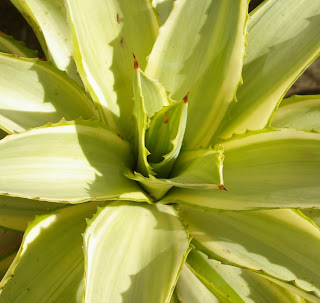 |
| Thunbergia 'Raspberry Smoothie' |
In 1998 I spent a week or so in Kenya, travelling around botanising and visiting friends. While staying with Sue and Charlie Stubbs at Lake Naivasha, I saw that Sue was growing a pale pink
Thunbergia in a pot on the veranda: with slightly silvery-hairy leaves it was rather attractive. Scouring the plant for seeds, I found just one capsule, with a single seed in it. This was passed on to Kees Sahin in Holland, where it germinated in the nursery and was grown up to flowering size, proving to be identical to its mother plant. Like all
Thunbergia, it proved to be easy to propagate from cuttings, which is helpful as it has never been known to set another seed. In later years, the Sahin company commercialised it under the name 'Raspberry Smoothie' and it is now grown worldwide as a cutting-raised summer ornamental. Although I knew this, I had never actually seen it for sale before today, when I drifted through the Wisley Plant Centre and saw it lined up with a number of other
Thunbergia clones.
 |
| 'Raspberry Smoothie' in the Wisley Plant Centre, with T. alata |
In all these years of being acquainted with the plant I have never been able to identify it satisfactorily. Despite innumerable sources on the internet, it is not a form of the common
Thunbergia alata - they differ in very many characters. I had hoped that I would be able to identify it from Kai Vollesen's volume on Acanthaceae in the
Flora of Tropical East Africa, which came out in 2008, but despite poring over the keys and descriptions this evening I can't pin it down. As a cultivated plant it could have come from anywhere in the range of the genus, and not be an East African native at all - though that would seem most likely. So I shall have to press specimens and refer them to higher authority for identification.
I am curious to see how it performs - the plant I bought will decorate my parents' conservatory - as it is not a very good climber and needs to be supported (its natural tendency is to sprawl). The best I've seen it was when it was planted in rich moist soil in full sun in the nursery in Boskoop, where it really took off and flowered freely from prostrate stems.



































































